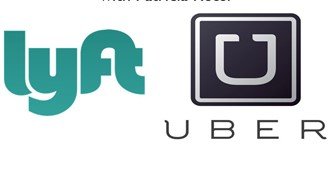 My fascination with the disruption of ride sharing continues.
My fascination with the disruption of ride sharing continues.
I thought it started when my business partner and I were in Houston in October and this impromptu auction/economic experiment broke out that I caught on video.
If you don’t watch it, here is a spoiler alert: the cabbie and the limo driver were not happy while we ended up using Lyft and had a great experience.
But I realized my fascination with ride sharing happened 12 years previous in 2002 in Moscow.
I wrote an article for In Business Las Vegas published January 17-23, 2003. As I was portraying life in Moscow during the optimistic pro-Democracy years just as Putin was taking over, I wrote this:
Andre is a Russian sailor. He makes $100 a month to support three boys and his wife in a small apartment. To survive, he is part of the new underground Moscow economy. Two days a week, he drives around Moscow picking up people who need a ride. A traveler simply sticks out of some a driver stops, you negotiate a fee, and you get to your destination. No taxi authority is necessary. Like Andre, many Russians are learning how to work the system.
Granted, Andre and his customers did not have smart phones for automatic payments, GPS, and verification that Andre wasn’t a part of the Russian mob.
It’s fascinating that I saw this happen in Russia and we are seeing this happen here. It is also sad re-reading this and seeing how Putin has turned Russia into a petro-Banana Republic. But the economic times we are in – or have been in – create disruptive technologies and inventive business models.
For me, Lyft and Uber save money, save time, and their drivers seem eager to please and are friendly. This is based on about 10 rides over the past few months.
Here are a few highlghts:
In Costa Mesa, CA we used Lyft to get to a restaurant. However, the driver was more interested in selling us on his real estate business. He talked way too much and he ignored the GPS instructions. The result: we were charged $31 for what should have been a $15 fare. Susan, my business partner, used her Lyft app to find the ride and to pay for it. She also used the app to complain about the driver. Lyft responded and cut the fare in half immediately. We don’t know what happened to the driver.
In North Canton, OH, we used Uber and the local taxi service. The cabbie was nice as was his wife who rode shotgun and used the phone as dispatch. These were poor folks getting by, no doubt. But the cab was messy and they both smoked so the smell wasn’t very enjoyable. We eventually used an Uber driver – one of only three in the area. His car was small but nice – with no smoke — and his fare was lower than the cabbie. The Uber driver was a full-time county government employee who drove at night to “pick up some extra bucks.” He had only been with Uber for a few months but said he loved it. He said his wife thought he was nuts but she enjoyed the extra cash.
Some other thoughts on Canton OH and ride sharing. Since Canton is about an hour outside of Cleveland, it seems like a great place to be a Lyft or Uber driver. (Only Uber was in Canton.) You could easily make a run to Cleveland Hopkins International for someone needing a ride to and from the airport. The taxi service in Canton area seems shoddy. There are tons of restaurants in the area with people who have had a few pops to drink.
An observation on the difference between Uber and Lyft: Lyft allows you to put a tip on the app for the driver; Uber does not.
Again, I am not shilling for any service here. I just love seeing the economy go from underground to above ground with new technology that seems to be upsetting the old order. Tell me what you’re seeing and where.
Comments on this entry are closed.